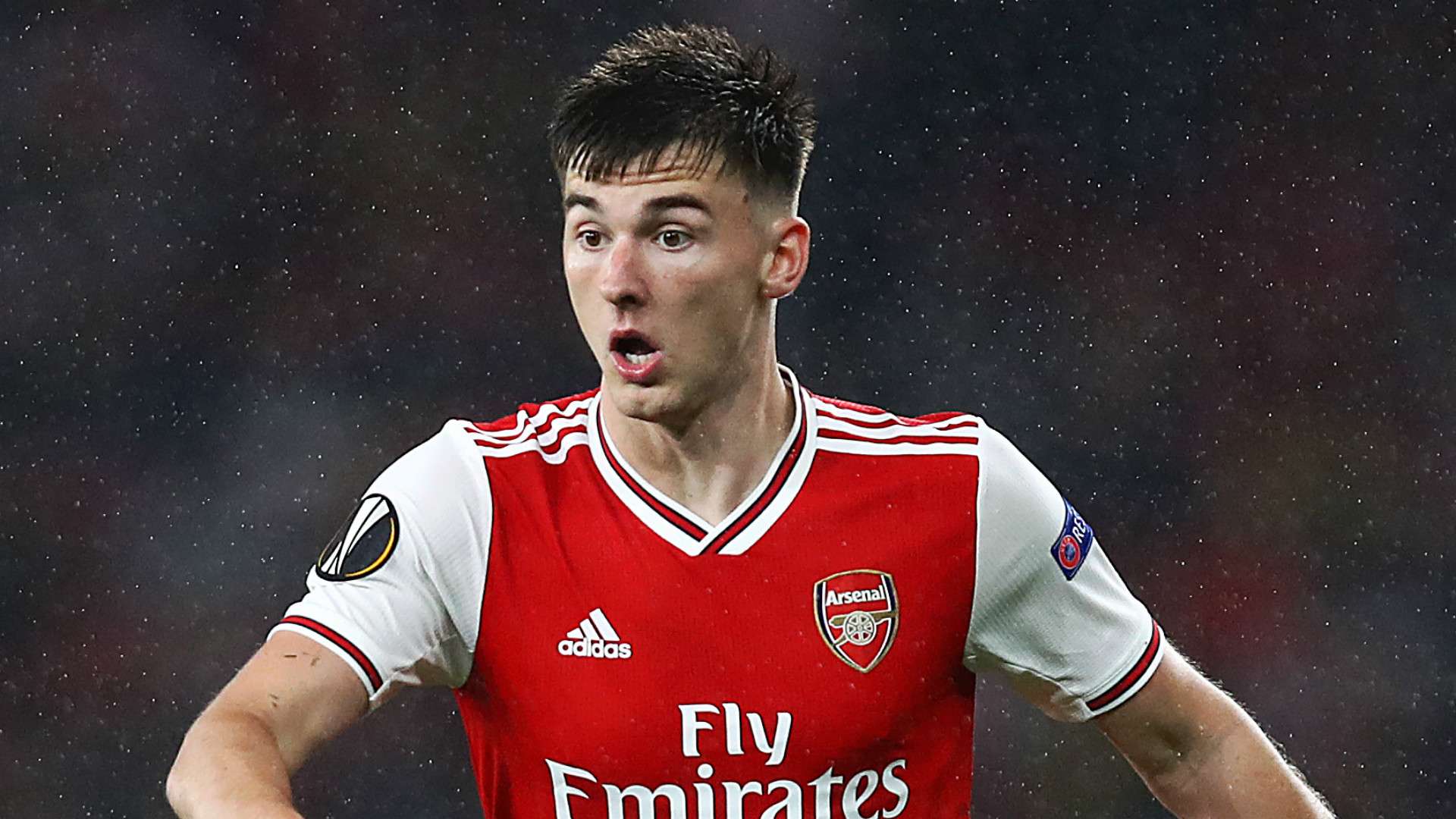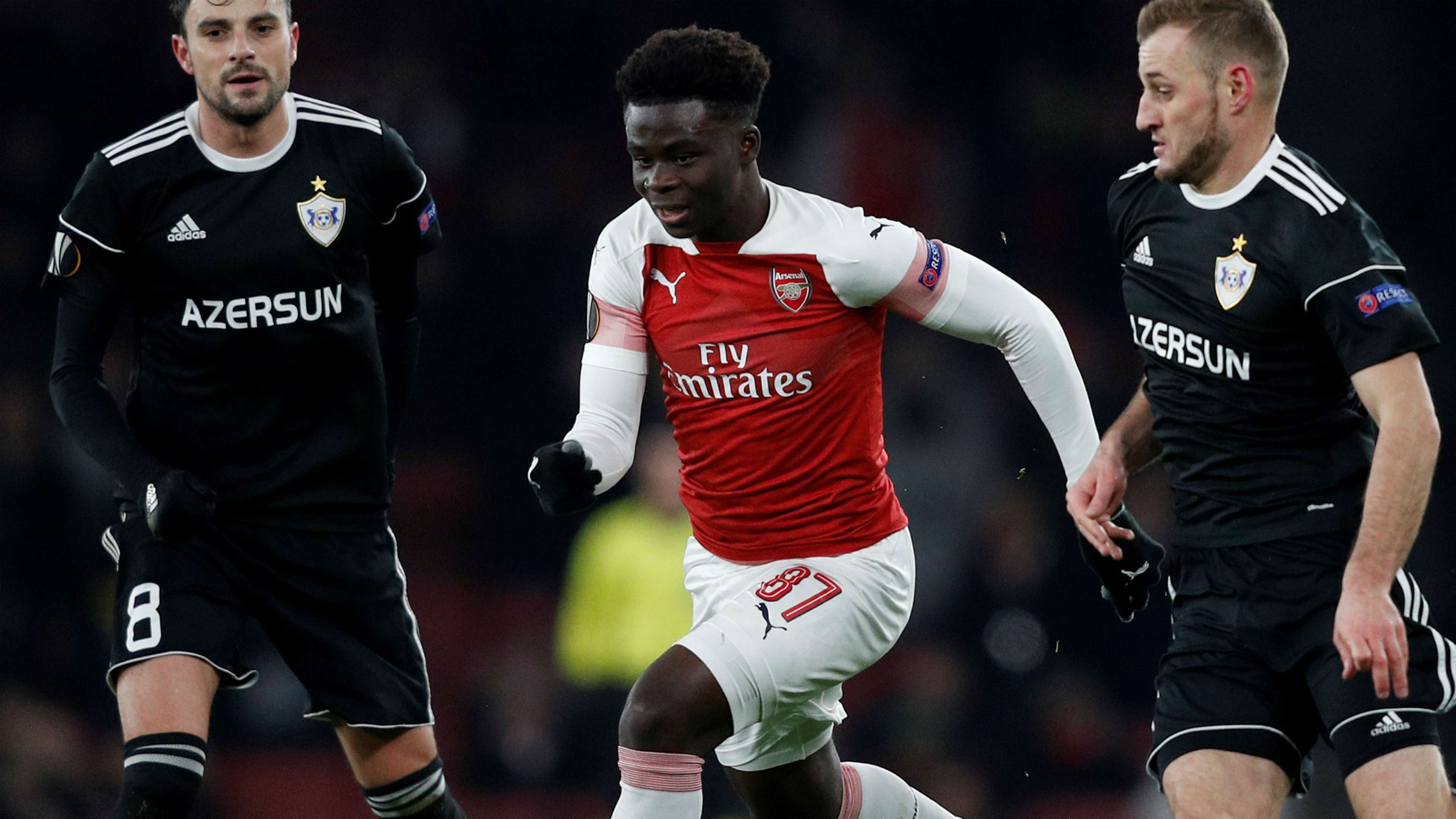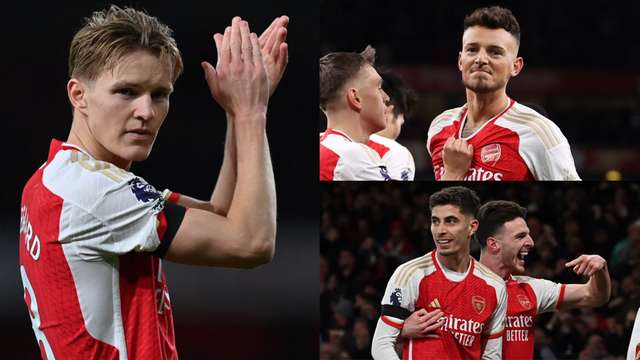If the latest soundbites from Arsenal boss Mikel Arteta are anything to go by, retaining the services of Bukayo Saka is very much a 'priority' for the Gunners.
Of course, the fact that the precocious winger is spoken of as important "for the future of the club" – in the same breath as Pierre-Emerick Aubameyang – paints a vivid picture in itself.
His impact since bursting onto the scene earlier in the season has been undeniably eye-catching. No one at the club has laid on as many goals in 2019/20 as Saka's nine and, despite being pressed into service as a full-back, he has been one of the few beacons of consistency in a season of upheaval at the Emirates.
However, the return to action in the Premier League this week poses a more urgent question for the present, both to the club and to head coach Arteta.
In the final reckoning, the enforced Covid-19 break came at an opportune point in the season for Arsenal. With the club smarting still from Europa League elimination at the hands of Olympiakos, a breather was necessary following a punishing schedule of matches every four days for two months.
Most importantly, it has allowed the Gunners to properly rehab a long injury list that included the likes of Cedric Soares, Kieran Tierney and Sead Kolasinac.
 Getty Images
Getty Images
Arteta has spoken in recent weeks of his excitement at the prospect of working with Scotland international Tierney in particular, describing his application as 'incredible'. The full-back, who joined from Celtic last summer, had seen his integration into the Arsenal side stunted by two lengthy injury absences. However, the 38-year-old coach now believes he is ready to contribute, and will "bring something special" to the team.
Should Tierney, as is widely expected, claim the left-back spot for himself, it raises a tantalizing question: what happens to the livewire Saka?
In light of the fact that the 18-year-old has stated his desire to return to his more natural role as a winger, the answer to that might seem straightforward. However, a proper consideration throws up some posers, and leads to a deeper discussion about the management of playing time for wonderkids.
To begin with, there's a chicken and egg riddle: has Arteta's use of Saka as a marauding left-back so far been a matter of expediency or design?
The shape of Arsenal's attacking under the Spaniard has had a unmistakable skew toward the left. There are a number of tactical adaptations – the right full-back tucking into midfield, the nominal left-winger playing closer to the striker, and the use of Granit Xhaka in a deeper, slightly wider covering role – that have been geared toward unsheathing Saka as an attacking weapon.
Is it the case that Arteta settled on that as a means to get the best out of what was on hand (in light of the absences of Tierney and Kolasinac), or is that the format he would have looked to adopt anyway?
 Getty
Getty
If the former, then the availability of 'natural' full-backs will no doubt lead to a reformation of Arsenal's attacking set-up and play, especially as Tierney in particular is of a different mould: less a direct dribbler and more orthodox in his interpretation of the role.
If, however, it is the latter (and there is some evidence for this in Kolasinac's occasional outings), then it is not exactly a given that Saka will simply revert to a left-wing role.
For one thing, there is the fact that a side tailored to play a certain way and reliant on it's left-back as a principal actor in the attacking third might not prove as effective with a different profile in the position. Then there is the small matter of the incumbent on the left of the attack, who also happens to the club's primary and most reliable source of goals.
Arteta's use of Aubameyang on the left of the front three has garnered mixed reviews from pundits and fans, but in fairness it has gone some way toward solving the conundrum of how exactly to fit both he and Alexandre Lacazette into the same starting line-up.
Crucially though, there has been no marked drop-off in the Gabon international's output: he has continued to manfully shoulder the goal burden of the side. Saka, for all his qualities and his significant upside, cannot realistically be expected to do that at his age, and has not shown the same aptitude as a finisher in any case.
What is clear is that, if the current set-up remains, left-back remains the best use of his particular set of skills.
 Getty Images
Getty Images
Say, for the sake of argument, Arteta does rip up his blueprint so far. Tierney comes into the squad, Aubameyang is moved into the central role many have longed for him to play and Saka plays more as an orthodox winger, providing natural width from high up the pitch.
That would no doubt leave everyone happy, not least of all Saka himself. However, the implication of that would be that the teenager is ostensibly a first-team regular, one on whom the side's attacking mechanism is built.
At 18, that is a significant responsibility, and a separate concern over burn-out and physical problems down the line surfaces.
The list of footballers – from Michael Owen to Ronaldo to Wayne Rooney – who have suffered from playing too much football in their teens is a long one. If, as Arteta stated, Saka is to be central to Arsenal's future, it will be necessary to ease him in and manage his minutes.
First though, the club will have to see to that contract extension. Then, it must decide whether Saka's development will continue as back-up left-back or as back-up left winger.








